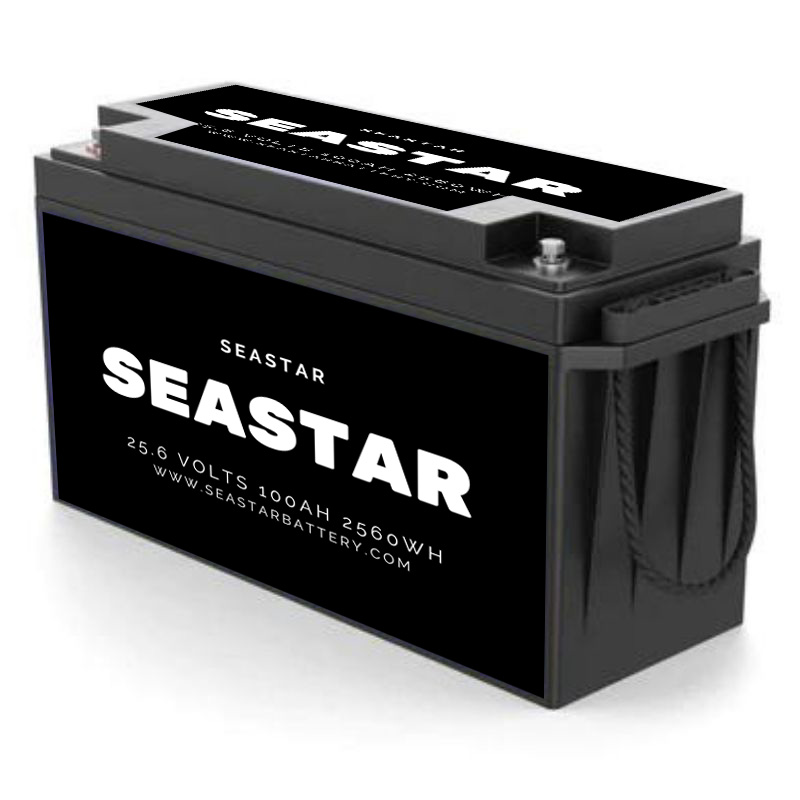Understanding how to convert watt-hours (Wh) to amp-hours (Ah) is essential when choosing the right lithium battery. This easy-to-use Wh to Ah conversion calculator helps you quickly determine the required battery capacity, ensuring optimal performance for your devices.
Table of Contents

Watt Hours (Wh) to Amp Hours (Ah) Conversion Formula
Watt-hours (Wh) and amp-hours (Ah) are critical metrics for evaluating battery capacity. Watt-hours measure the total energy a battery can deliver in one hour, while amp-hours gauge the battery’s capacity to maintain a current over time. You can effortlessly convert Wh to Ah using the formula below:
Conversion Formula: Amp Hours (Ah)=Watt Hours (Wh)/Voltage (V)
Example: If you have a 1200Wh lithium battery with a voltage of 12V, you can calculate the amp-hour capacity as follows: 1200Wh/12V=100Ah
Converting Amp Hours (Ah) to Watt Hours (Wh)
Similarly, you can convert amp-hours back to watt-hours with a simple formula: Watt Hours (Wh)=Amp Hours (Ah)×Voltage (V)
Converting Kilowatt Hours (kWh) to Amp Hours (Ah)
For larger battery systems, such as solar energy storage, you may need to convert kilowatt-hours (kWh) to amp-hours. Since 1 kWh equals 1000 Wh, the conversion formula is as follows:
Capacity (Ah)=Energy (kWh)×1000/Voltage (V)
Example: If you’re building a 10kWh 48V solar energy storage system, calculate the required battery capacity as:10kWh×1000÷48V=208.33Ah
Converting Watt Hours (Wh) to Milliamp Hours (mAh)
For smaller devices like mobile phones, battery capacity is often measured in milliamp-hours (mAh). Since 1 Ah equals 1000 mAh, you can convert Wh to mAh with the following formula:
Capacity (mAh)=Voltage (V)/Energy (Wh)×1000
Example: Suppose your phone’s battery specifications are 3.82V and 10.28Wh. You can calculate the battery capacity as follows:10.28Wh÷3.82V×1000=2691mAh

Watt Hours (Wh) to Amp Hours (Ah) Conversion Charts for Common DC Voltages
| Watt Hours (Wh) | Voltage (V) | Amp Hours (Ah) |
| 100 Wh | 12 V | 8.33 Ah |
| 200 Wh | 12 V | 16.67 Ah |
| 300 Wh | 12 V | 25 Ah |
| 400 Wh | 12 V | 33.33 Ah |
| 500 Wh | 12 V | 41.67 Ah |
| 600 Wh | 12 V | 50 Ah |
| 700 Wh | 12 V | 58.33 Ah |
| 800 Wh | 12 V | 66.67 Ah |
| 900 Wh | 12 V | 75 Ah |
| 1000 Wh | 12 V | 83.33 Ah |
| 1200 Wh | 12 V | 100 Ah |
| 2400 Wh | 12 V | 200 Ah |
| 3000 Wh | 12 V | 250 Ah |
| 4000 Wh | 12 V | 333.33 Ah |
| 5000 Wh | 12 V | 416.67 Ah |
| 6000 Wh | 12 V | 500 Ah |
| 7000 Wh | 12 V | 583.33 Ah |
| 8000 Wh | 12 V | 666.67 Ah |
| Watt Hours (Wh) | Voltage (V) | Amp Hours (Ah) |
| 100 Wh | 24 V | 4.17 Ah |
| 200 Wh | 24 V | 8.33 Ah |
| 300 Wh | 24 V | 12.5 Ah |
| 400 Wh | 24 V | 16.67 Ah |
| 500 Wh | 24 V | 20.83 Ah |
| 600 Wh | 24 V | 25 Ah |
| 700 Wh | 24 V | 29.17 Ah |
| 800 Wh | 24 V | 33.33 Ah |
| 900 Wh | 24 V | 37.5 Ah |
| 1200 Wh | 24 V | 50 Ah |
| 2400 Wh | 24 V | 100 Ah |
| 3000 Wh | 24 V | 125 Ah |
| 4000 Wh | 24 V | 166.67 Ah |
| 5000 Wh | 24 V | 208.33 Ah |
| 6000 Wh | 24 V | 250 Ah |
| 7000 Wh | 24 V | 291.67 Ah |
| 8000 Wh | 24 V | 333.33 Ah |
| Watt Hours (Wh) | Voltage (V) | Amp Hours (Ah) |
| 100 Wh | 36 V | 2.78 Ah |
| 200 Wh | 36 V | 5.56 Ah |
| 300 Wh | 36 V | 8.33 Ah |
| 400 Wh | 36 V | 11.11 Ah |
| 500 Wh | 36 V | 13.89 Ah |
| 600 Wh | 36 V | 16.67 Ah |
| 700 Wh | 36 V | 19.44 Ah |
| 800 Wh | 36 V | 22.22 Ah |
| 900 Wh | 36 V | 25 Ah |
| 1200 Wh | 36 V | 33.33 Ah |
| 2400 Wh | 36 V | 66.67 Ah |
| 3000 Wh | 36 V | 83.33 Ah |
| 4000 Wh | 36 V | 111.11 Ah |
| 5000 Wh | 36 V | 138.89 Ah |
| 6000 Wh | 36 V | 166.67 Ah |
| 7000 Wh | 36 V | 194.44 Ah |
| 8000 Wh | 36 V | 222.22 Ah |
| Watt Hours (Wh) | Voltage (V) | Amp Hours (Ah) |
| 100 Wh | 48 V | 2.08 Ah |
| 200 Wh | 48 V | 4.17 Ah |
| 300 Wh | 48 V | 6.25 Ah |
| 400 Wh | 48 V | 8.33 Ah |
| 500 Wh | 48 V | 10.42 Ah |
| 600 Wh | 48 V | 12.5 Ah |
| 700 Wh | 48 V | 14.58 Ah |
| 800 Wh | 48 V | 16.67 Ah |
| 900 Wh | 48 V | 18.75 Ah |
| 1200 Wh | 48 V | 25 Ah |
| 2400 Wh | 48 V | 50 Ah |
| 3000 Wh | 48 V | 62.5 Ah |
| 4000 Wh | 48 V | 83.33 Ah |
